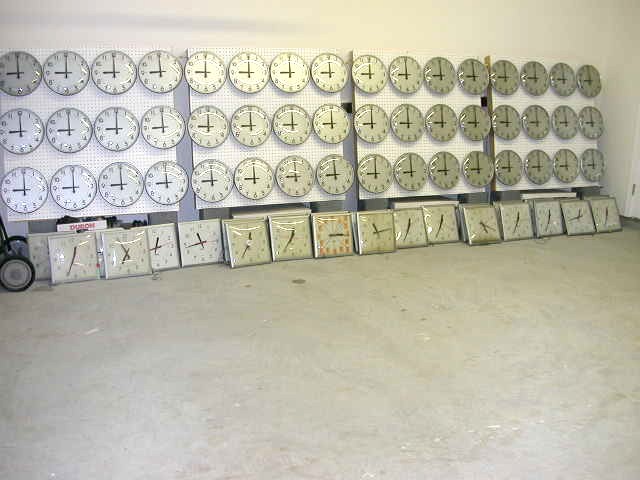Steve Bochan's collection
Steve's
interest
in Standard Electric equipment is pretty much like mine, in that he's interested
in the "newer" (1950-1960) stuff. He collects AR-2/AR-2A master and slave
clocks and has quite a collection and test lab going! Like most collectors
of this equipment, Steve has gone "a little crazy" in obtaining clocks for
his collection.

|
This is
my Standard Electric AR-3 date stamped "October, 1939" on the back. I won
this clock in an Ebay Auction and it came to me with the original AR-3 movement,
original three wire terminal strip above the movement and a dull brown painted outer rim I changed the movement to an AR-2 so that it could run on my AR-2A system I also sanded off the old scratched brown paint from the outer rim and cover, then primed it with a Rustoleum Primer, followed by a generous coating of Black High Gloss Enamel. It works perfectly and looks beautiful in the kitchen. Also, I was able to quiet down the impulse movement a bit by insulating the back cover with some carpet strips I had left over when I had the house built. I was told that the clock originally came from a train station in Pennsylvania, but wouldn't swear on it. Hands and clock face are the originals. |
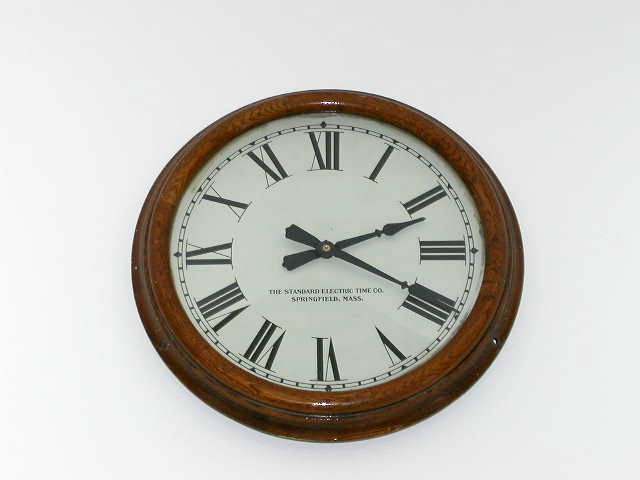
|
This wooden rimmed
Standard Electric Clock was also won on an Ebay Auction from a nice woman
in Colorado whose dad used to work on these at a school. The time frame
for this clock is the 1940's -- I like the Roman Numerals because I just
haven't seen them that much on the usual Standard Electric clocks.
The impulse movement
was an original straight impulse (no correction), so I couldn't use it on
my AR-2A system as it was. American Time & Signal told me they
could not fit an AR-2 movement onto the clock because the original hands
were a problem. So, I decided to simply put a battery movement in
it and stay with the original hands and clock face.
It hangs on the third
floor of my home in the Master Suite in a domed part of the ceiling and
looks terrific there.
|
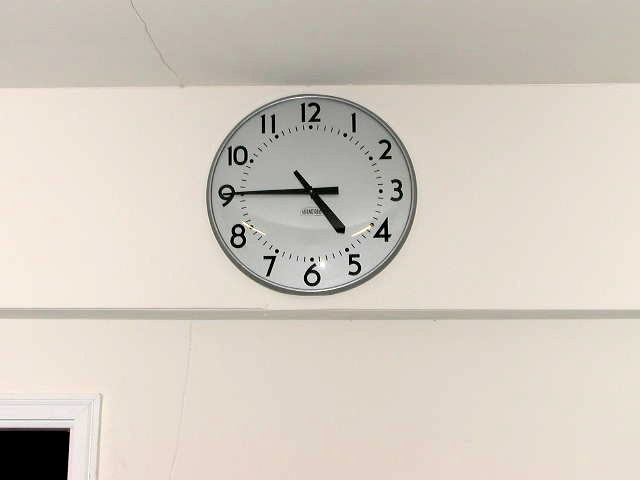
|
Here's one you're sure
to recognize. It's one of the large 15" AR-2 Standard Electric Clocks
that I got on my visit to Massachusetts earlier this year when a school
was throwing out their system.
This clock hangs in
my garage and is part of my AR-2A system. I changed out the original
Lucite cover with a glass cover because it makes the clock look better,
in my opinion.
Ed. Note: Steve gave me a clock identical to this one from the same school. |
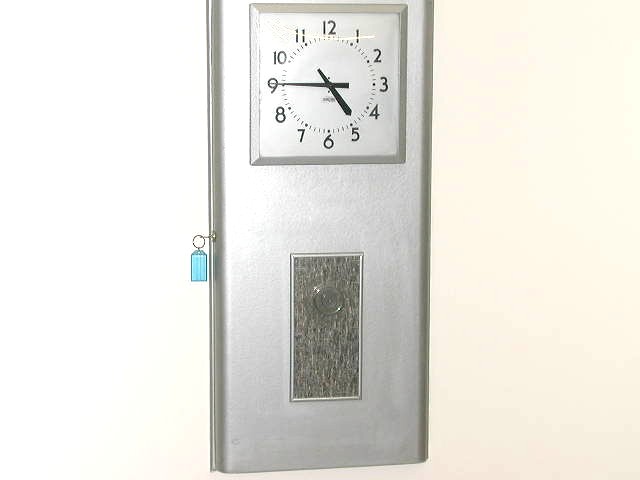
|
Here's one of the AR-2A
master clocks I retrieved from a recent visit to that school in Massachusetts
that was getting rid of their system. With the help of my friend Gary
Kronberg of Standard Electric Technologies in Richmond, Virginia, this master
clock works like a charm. It keeps perfect -- and I do mean perfect
-- time. Gary replaced a few of the original parts for me (the worm
shaft was slipping because it was wearing down) and he showed me how to
adjust the timing cams inside.
|
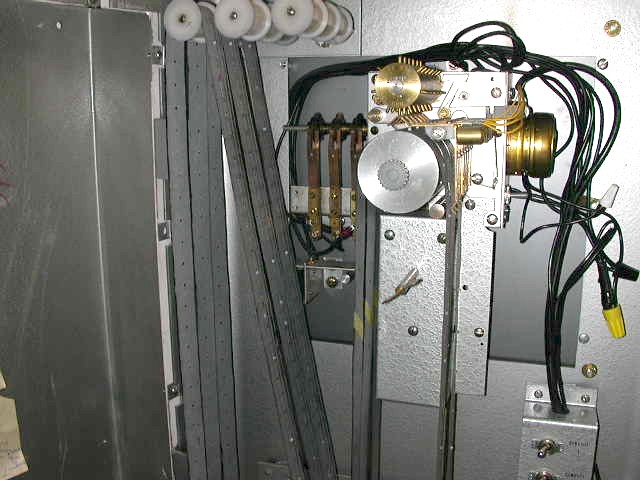
|
This shows the inside
of my AR-2A Master Clock with three threaded ribbons and the timing cams
in the background.
|
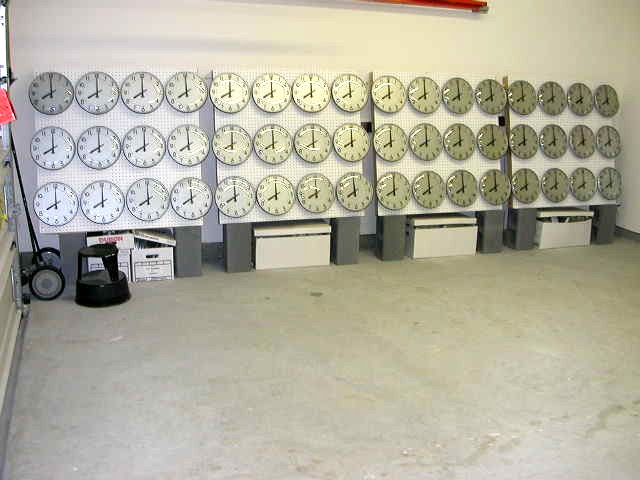
|
As you know, on my trip
to Massachusetts this past fall (2002), I retrieved a bunch of old
Standard Electric Clocks near the Springfield area where the original plant
used to operate. These clocks were being thrown out by a school in
Amherst and I brought them back to Virginia to try and recondition and work
on them one at a time. (Many just needed slight adjustments.)
I saw the picture of
the old testing boards at the Standard Electric plant in Springfield, Massachusetts
on your website, and came up with a similar idea for testing the clocks
I retrieved from Massachusetts. In my garage, I have a total of four
test boards capable of handling 12 AR-2 clocks a piece. All 48
slaves run off of the AR-2A Master Clock in my garage and make quite
a racket when they're all operating :-)
Each clock has
been cleaned, lubricated, tested, rims removed and repainted, clock
faces and hands cleaned and reconditioned, and then run for at least
168 hours continuously to make sure there are no problems with them. I'll
probably end up selling them off to a small business or plant since they
look almost new. This has been a 'learn by doing' project.
|
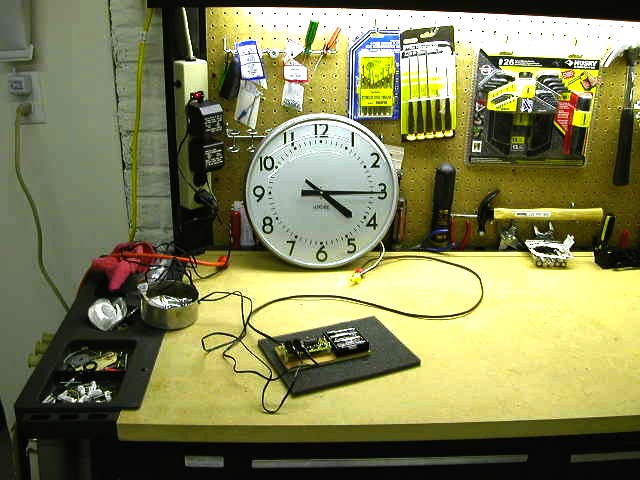
|
Once again your website
has been a great source of information relative to these slave clocks and
their histories. One of the items you have a link to is the Mumford
Slave Driver, and I am including a picture of the one I use on my workbench
in my garage when testing each AR-2 clock individually.
I cannot say enough
good things about Bryan Mumford and his attitude. He and I had been
corresponding a lot after my trip to Massachusetts, and he was intrigued
by the way the AR-2 slave clock worked, especially with the corrective coil
and the 48-volt charge the master supplied each hour on the 60th minute.
Bryan actually created what he called the "fancy slave driver" for me so
that I could simulate field conditions when testing the AR-2 slave clocks
on my workbench.
His timing chip is
extremely accurate and he supplies two 24-volt transformers for the purpose
of regular impulsing, as well as for the hourly corrective impulse every
60 minutes. It works great (each impulse is clean) and I would
strongly recommend anyone that works on Standard Electric slave clocks to
seriously consider contacting Bryan for one of these for their testing purposes.
As you can see from the picture, they are small and run off of four AA batteries.
There is a way to manually impulse both the minute and hourly corrective
functions by simply pressing a button.
The great thing about
this is you don't need a big clunky old master clock to run a slave clock
you may want to test -- you can use this convenient driver anywhere.
Can you imagine if the Standard technicians had this device in the '60s,
'70s or '80s?
|
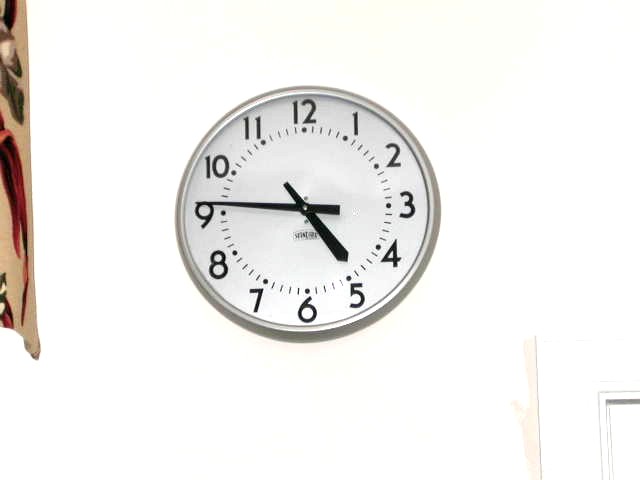
|
And last but not least,
here is that 10" clock you sent me a while back. It is part of my
AR-2A system and hangs in my office downstairs.
|
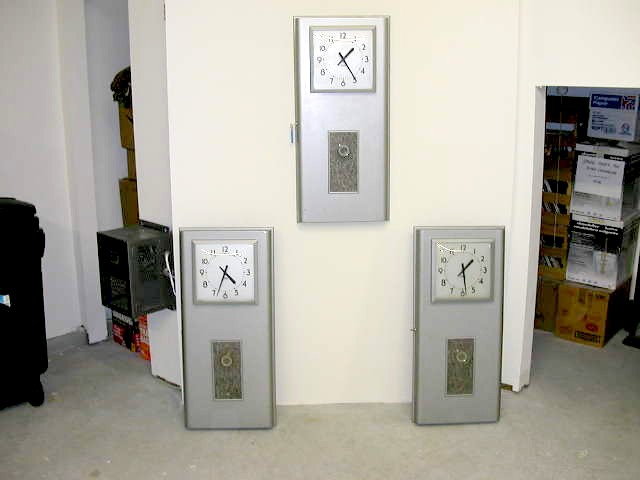
|
Have you ever seen
anything so ridiculous? :-)
The Master on the
left is an AR-2A and is one of the ones I obtained on my Massachusetts trip
in September; the one in the center is also an AR-2A and is the one currently
running my system and the one on the right is a GR-C Master for the GR-C
24v synchronous square clocks that John was getting rid of in Indiana.
The GR-C has a number
of micro switches and other upgrades on the power supply that the AR-2A
doesn't have (micro reset switches, an indicator light that tells when the
power is on, etc.)
|
|
|
This is what my garage looked like after my trip to Indiana. The GR-C slaves are below the test boards (on the floor). |
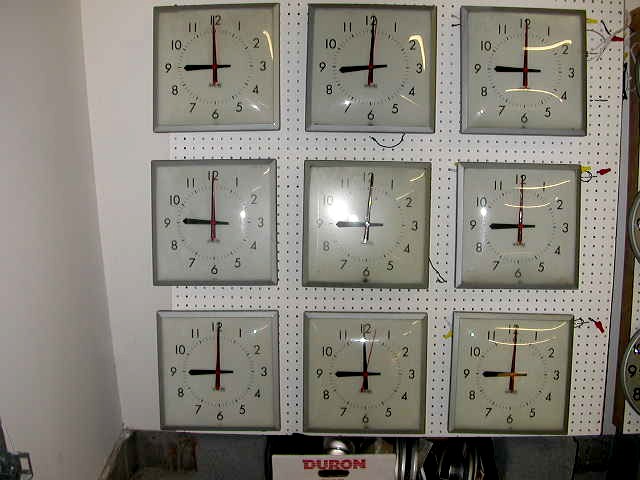
|
The hourly
correction works, sort of. Very strange. Gary discovered that the 12-hourly
correct micro switch is bad and there are a number of other adjustments that
still need to be made before the GR-C Master is where it should be. |
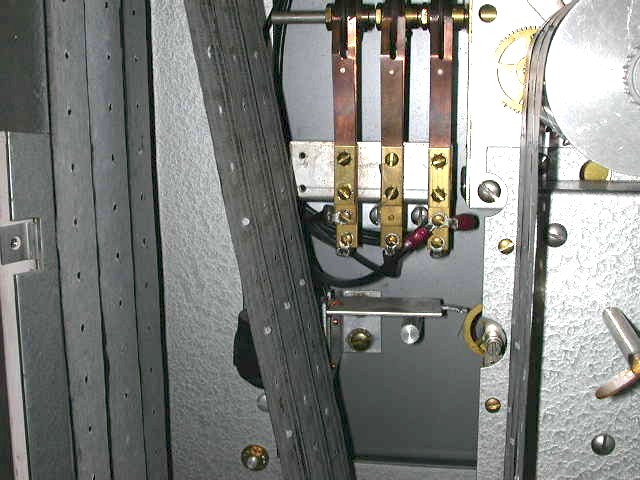
|
I had
asked Steve to take a picture of the drop fingers in his master clock so
I could compare them to mine. Thought I'd share this picture as well. |
